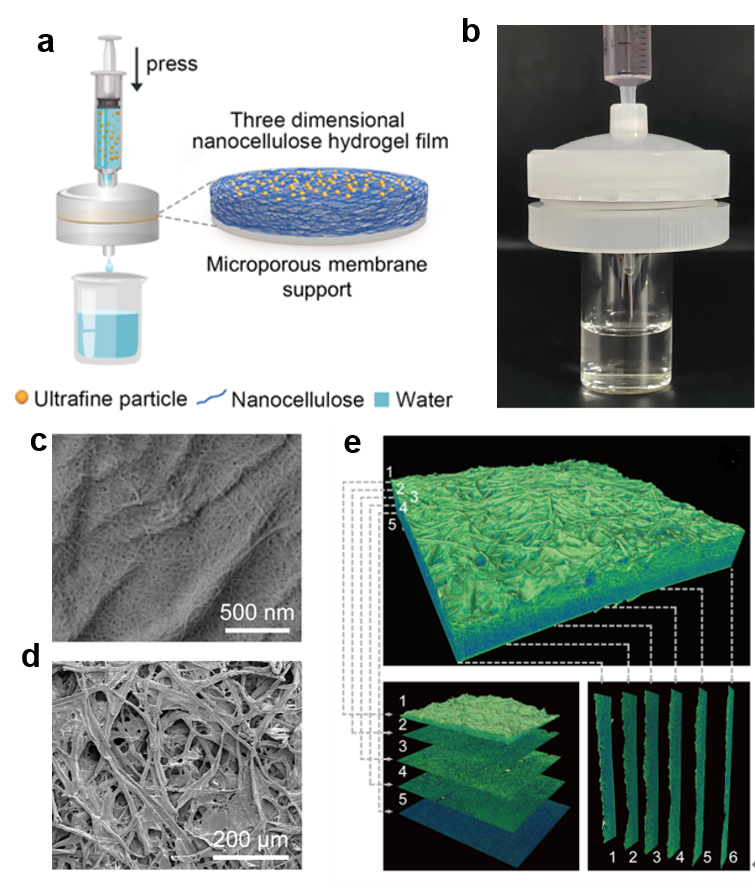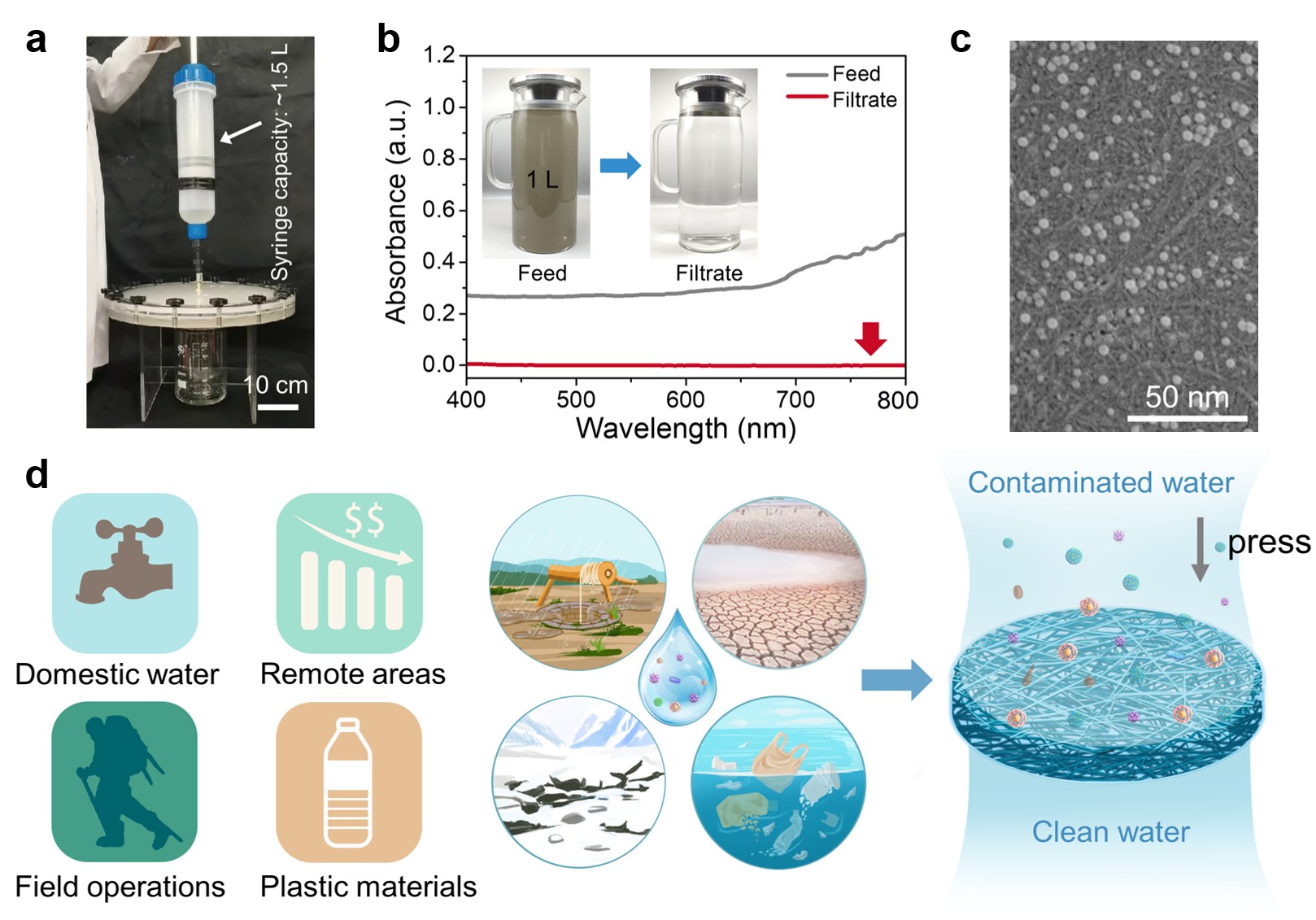Eco-friendly Bio-based Nanofiber Filter System For Sustainable Water Purification
Published in Earth & Environment
Water, the vital lifeline of our planet, is under severe stress. Roughly a quarter of the global population is already experiencing an extreme water shortage, a crisis expected to intensify alarmingly by 2025, potentially affecting up to 3.5 billion people. A key challenge is that many freshwater sources, although abundant in some regions, are contaminated with suspended solid particles such as sediments, bacteria, viruses, and microplastics. This issue is particularly acute in remote and underdeveloped areas where residents frequently consume water tainted with these harmful particles, often without realizing the danger. The diverse types and non-degradable nature of these particles add significant complexity to water purification efforts. To address these challenges, researchers have proposed various approaches. Traditional methods, such as centrifugation and electrophoresis are limited in their effectiveness, especially in areas lacking specialized equipment. Among these methods, filtration gains great attraction due to its simplicity and feasibility for particle separation.
However, many filter membranes struggle to block ultrafine particles and are prone to clogging, limiting their usefulness. Although ultrafiltration and nanofiltration techniques can remove these minute contaminants, their low permeability and reliance on specialized equipment hinder practical applications. To overcome these challenges, we developed an injection-driven bio-based nanofiber hydrogel filter (BNHF) that combines a hydrogel film featuring entanglement networks of intrinsic hydrated nanofibrillated cellulose with a syringe, engineered for ultrafine particle removal and sustainable water management (Fig. 1a-b).

Figure 1. a) Schematic demonstration and b) digital photograph of the BNHF system. c, d) SEM images of the surface of the cellulose nanofiber hydrogel film. e) X-ray micro-CT images of the cellulose nanofiber film on the microporous membrane viewed from different sectional perspectives.
The hydrogel film features an inhomogeneous porous structure with fiber-like bundles and sheet-like aggregates, where the sheet areas consist of web-like entangled nanofibers (Fig. 1c-e). The porous network, with sizes ranging from micrometers to nanometers, allows for the efficient interception of ultrafine particles, resulting in high particle rejection efficiency. Remarkably, this system achieves nearly 100% rejection efficiency for particles larger than 10 nm, significantly surpassing the performance of conventional commercial filter paper and microporous membranes. The BNHF also boasts an impressive flux rate of 90.6 g cm−2 h−1, which is 4.4 times higher than standard vacuum filtration methods.

Figure 2. a) Digital photo of the scalable BNHF. b) UV-vis spectra of the feed and filtrate of the dirty river water through BNHF. c) SEM image of the surface of cellulose nanofiber film after filtration of the nanoplastic-contaminated water. d) Schematic demonstration of the representative areas requiring particle-contaminated water purification, including domestic water, water in remote areas, field operations, and water in contact with plastics.
We further successfully engineered a scalable and reusable BNHF system, capable of generating clean water from various challenging sources, such as river water, dirty water from melted snow, and nanoplastic-contaminated water (Fig. 2a-c). The scalable BNHF system can also be used in many fields that require simple and convenient operations to achieve the purification of particulate-polluted water (Fig. 2d). The system's inherent biodegradability, scalability, and reusability not only support resource conservation and environmental friendliness but also enhance cost efficiency. These comprehensive advantages position the BNHF as a superior filtration system, holding promise for water purification across various fields and offering a sustainable solution to the global water scarcity crisis.
Follow the Topic
-
Nature Sustainability

This journal publishes significant original research from a broad range of natural, social and engineering fields about sustainability, its policy dimensions and possible solutions.





Please sign in or register for FREE
If you are a registered user on Research Communities by Springer Nature, please sign in